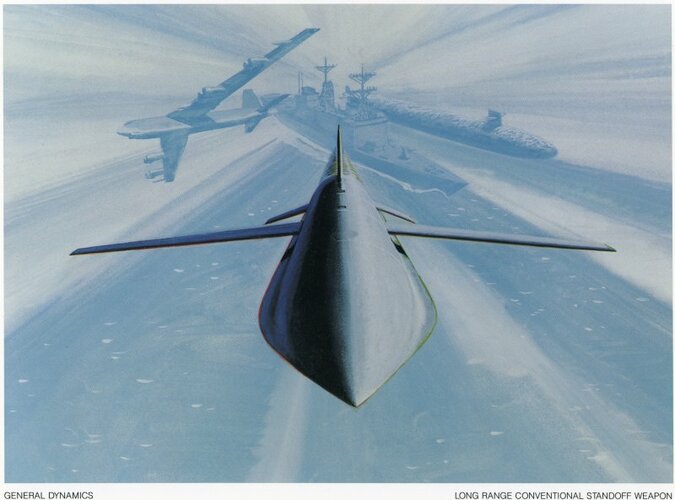- Joined
- 1 April 2006
- Messages
- 11,364
- Reaction score
- 10,149
Contenders
1).Boeing
2). GD
3).Texas Instruments
4).?
-----------------------------
Boeing LRCSW
From AIAA-92-0082
"A basic objective of the study was to develop a missile system
design concept that would meet the mission requirements
shown in figure 1. The missile program was the Long Range
Conventional Standoff Weapon (LRCSW) contract. LRCSW
system requirements were defined several years before the
successful employment of conventionally armed Tomahawk
BGM-109 cruise missiles during Operatlon Desert Storm In
1991. All of the Tomahawk cruise missiles were launched
from surface shlps or submarines. However, the LRCSW
system was envisioned as a missile. or family of missiles, that
could be launched from a variety of ships, submarines, Navy
aircraft , and Air Force aircraft.
1).Boeing
2). GD
3).Texas Instruments
4).?
-----------------------------
Boeing LRCSW
From AIAA-92-0082
"A basic objective of the study was to develop a missile system
design concept that would meet the mission requirements
shown in figure 1. The missile program was the Long Range
Conventional Standoff Weapon (LRCSW) contract. LRCSW
system requirements were defined several years before the
successful employment of conventionally armed Tomahawk
BGM-109 cruise missiles during Operatlon Desert Storm In
1991. All of the Tomahawk cruise missiles were launched
from surface shlps or submarines. However, the LRCSW
system was envisioned as a missile. or family of missiles, that
could be launched from a variety of ships, submarines, Navy
aircraft , and Air Force aircraft.





















